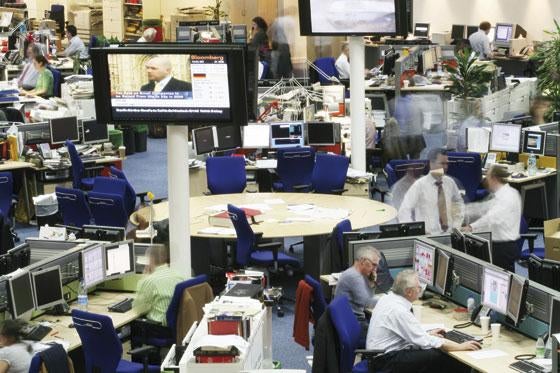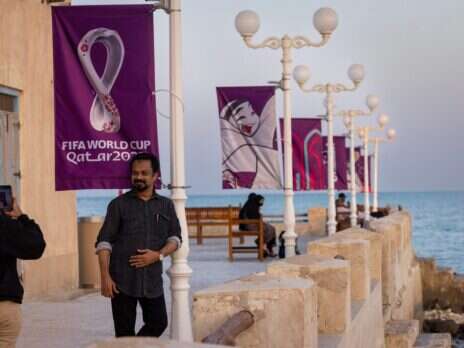
An integrated newsroom is not the holy grail – print and online news operations need to have individual focus, according to the chief executive of Norwegian paper Verdens Gang.
In his keynote speech to the World Association of Newspapers readership conference, Torry Pedersen said: “The model we have chosen for the newspaper and online we have called integrated separation.
“Everyone talks about integration in a newsroom as a holy grail. We don’t believe in it. You have to have a focus.
“To make a newsaper good, you have to focus on the newspaper, to make online good, you have to focus on online.
“And you need considerable skill. So to centralise the decision-making is to slowly take the front position online.”
Pedersen’s comments will be seen as heresy to many UK newspaper executives. Telegraph Media Group, Guardian News and Media and many regional newspapers are in the process of merging their online and print news operations.
Pedersen used the example of the Washington Post, which has completely separate newsrooms. He said that although his newspaper and online teams were separate, they were on the same floor.
“The online focuses on online and the newspaper focuses on the newspaper. I firmly believe in the model of integrated separation. At that point I differ from most of the theories I read about integrated newsrooms.”
Verdens Gang newspaper has made its mission to set a national agenda and to dominate a story on all platforms – print, online and video.
“You have to make good use of all platforms to make an impact. The reason we did it is because we have to take into account the market is changing and plan properly. We are the most quoted news outlet by other media.”
Pedersen said the obvious difference between online and newspapers is that there is no deadline online, which means you have to act on that theory and publish continuously. He used the example of a building falling down in Norway, killing five people.
“On the web we had published 28 articles with 113 updates before the newspaper industry. We had eight videos, live video transmission, flash animations, graphics and soundslides, all the abilities given to us by online.
“You really have to embrace online. The newspaper was wonderful as well, they had exclusive stories and it was edited in a different way. It means that if there is no deadline you have to publish continuously.”
When asked if, in the case of the collapse of the building, any sharing went on with content, Pedersen said that the team worked completely independently and no content from the paper went online and vice versa.
“Nothing from online was reported in newspaper, they were both working hard for exclusives.”
Rising profits
Pedersen said his newspaper has lost considerable circulation in the past six years but had seen an increase in profit from both print and online
He said that the increase in profit from the print product came from new weekend supplements. When the title launched a Saturday supplement it also raised the price of the Saturday edition by 15 per cent.
“The profit for this alone will be 48 million euros this year because of the price and the ad revenue,” he said.
“We have done the same thing on Sunday, we have increased the profit considerably. Sunday is the lowest selling day in the regional newspaper market [In Norway], but because of the price increase it still gives a healthy profit.
Pedersen said that the supplements were better vehicles for advertisers: “It is important to have products that can feature wonderful adverts.”
The newspaper conducted reader research and found that 37 per cent of people questioned said the reason for buying a newspaper on a Saturday was the supplement, especially women and young people.
The key factor with supplements is that they allow issue marketing, said Pedersen, something impossible with a daily newspaper.
“Marketing has a direct effect on the sales and issue marketing has been driving sales quite considerable. We do a lot of advanced sales modelling,” he said.
Online revenue
Pedersen said that the newspaper uses various different models to make money online, and that around 30 per cent of advertising revenue at the moment comes from online, a figure he hopes to increase to 50 per cent in the next three years.
“We use all different models to bring in the money. With advert formats on front page we have large format 24 hour ads, two formats are sold by impressions, several sold on a monthly basis – normally booked for entire year – and one position by the hour. And we sell job adverts by the week.
“It so important to attract different advertisers. Let the advertisers dominate – brand advertisers want to dominate, so give them three adverts around a story rather than letting them share with other advertisers.”
In 2006, the newspaper launched a financial site based on advertising revenue, and in 2007 it launched a social networking site based on advertising and buying vanity-features with around 50 per cent of the revenue from the social networking site coming from the vanity features (such as making your profile photo larger).
Pedersen said that new ideas for revenue come all the time. “When we launch a new product idea we will have a totally different business model. Online is quite new, it’s a teenager, whilst newspapers are pensioners.”
Email pged@pressgazette.co.uk to point out mistakes, provide story tips or send in a letter for publication on our "Letters Page" blog




